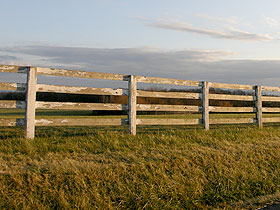Home > Patterns > Activities > Repeating patterns in the environment
Repeating patterns in the environment
Here are two examples of patterns students might find on a pattern hunt.
|
|
|
Both are spatial repeating patterns.
Drawings of such patterns use the same understanding needed to draw rectangular grids.
Students may comment only on the pattern in one direction, for example, describing the wall in the first image as "small brick, big brick, repeated"; others may recognise it as repeating in two dimensions and forming a tessellation.
Such examples provide an excellent context for introducing more advanced language.
The most important term is congruent which is equivalent to saying that a repeating pattern has identical units of repeat.
Other useful terms are rectangle and parallel.
Most repeating patterns in the environment occur in manufactured objects.
Some examples are tiles, pavers, windows, zebra crossings and railway lines.
Such objects are generally assembled from units that are very nearly identical.
They can readily be modelled using cardboard cut-outs and represented digitally using software such as Pattern Blocks.


